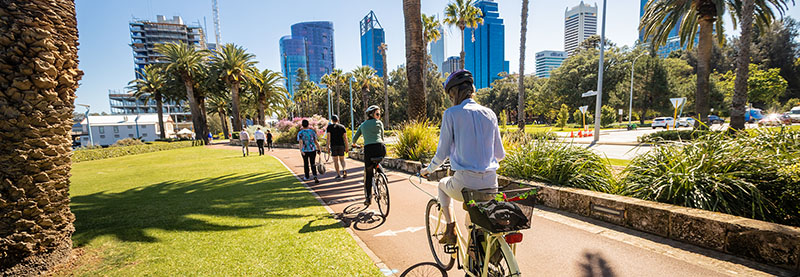What is active travel?
Active travel refers to being physically active to make a journey, which can be for a variety of purposes such as transport, exercise, fun or recreation.
Walking and bike riding are the most common modes, but using a wheelchair, scooting, skating, running, paddling or using other assisted devices (such as an e-bike) are also included.
‘Active travel’ is used interchangeably with active mobility, active transport (often used to describe infrastructure or the network), ‘walk, wheel, ride’.

About the WA Active Travel Strategy
The WA Active Travel Strategy will be an overarching strategic document that outlines a coordinated approach to increase active travel in Western Australia. It will:
- capture the strategic direction from relevant State Government agencies and partner organisations and seek to focus outcomes
- articulate a shared and accepted vision for the future of active travel
- provide clear direction on the action required to implement the vision
- outline how progress will be measured and outcomes evaluated.
Consensus will be sought on the strategy’s vision and objectives, as well as acceptance, ownership and priority of actions across relevant State Government agencies.
The project is being led by the Department of Transport, on behalf of the WA Bike Riding Reference Group (BRRG), in collaboration with other State Government agencies.
The BRRG is chaired by Chris Tallentire MLA and incorporates high level representation across State government and industry to facilitate strategic discussion to progress initiatives that support and encourage bike riding and other active modes in Western Australia.
Project timeline
The expected project timeline is:
- Initial engagement with key stakeholders - Completed
- Background research and literature review - Completed
- Engagement phase 1 - Completed
- Draft strategy - Underway
- Engagement phase 2
- Final strategy
- Implementation